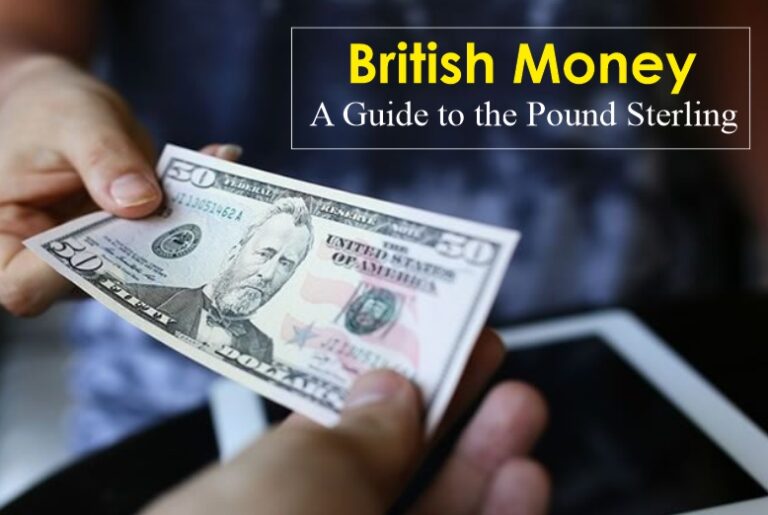British money, known as the pound sterling, holds a fascinating history and remains one of the world’s most significant currencies. Let’s dive into the world of British currency, exploring its coins, notes, and historical significance.
A Brief History of the Pound Sterling
The pound sterling, often called the British pound, is the official currency of the United Kingdom. Its symbol, £, derives from the Latin word libra, meaning scales or balance. British money has a rich history dating back to the medieval era. The Royal Mint, responsible for producing coins, has been in operation for over 1,100 years.
From Gold Nobles to Modern Coins
In medieval times, gold nobles and half groats were common. Today, British coins include denominations from one penny to two pounds. The pound coin, introduced in 1983, replaced the one-pound note. Each coin features distinctive designs, often commemorating significant events or notable figures. For instance, the fifty pence coin has featured designs celebrating the UK’s cultural and historical milestones.
Paper Money and Polymer Notes
The Bank of England issues paper notes, with denominations ranging from five to fifty pounds. Recent years have seen a transition to polymer notes, which are more durable and secure. The notes feature prominent British figures like Sir Winston Churchill, Jane Austen, and Alan Turing. Each note is packed with security features to prevent counterfeiting, ensuring the safety of the UK currency.
Understanding British Coins
British coins come in various denominations, each with its unique design and history.
The Pound Coin
The pound coin, introduced in 1983, is a staple of British money. It replaced the one-pound note and has since become iconic. The coin’s design features the Royal Coat of Arms, symbolizing the United Kingdom’s unity.
Fifty Pence Coin
The fifty pence coin, or “fifty pence,” is notable for its unique shape. It has featured various designs, including those commemorating the UK’s entry into the European Economic Community and the 2012 London Olympics.
Other Coins
Other British coins include the two pence, ten pence, and twenty pence coins. Each has distinct designs and serves different purposes in daily transactions.
The Role of the Bank of England
The Bank of England, the UK’s central bank, plays a crucial role in managing British money. It oversees the issuance of banknotes and ensures the stability of the pound sterling. The bank also sets interest rates and regulates financial institutions to maintain economic stability.
Historical Figures on British Money
British money often features portraits of notable figures from the country’s history. Queen Elizabeth II has appeared on coins and notes since her accession in 1952. Other figures include former Prime Minister Sir Winston Churchill and mathematician Alan Turing.
King Charles III and Future Changes
Following the death of Queen Elizabeth II, future coins and notes will feature the portrait of King Charles III. The transition marks a significant change in British currency, reflecting the continuity of the monarchy.
British Money Terms and Slang
The world of British money includes various terms and slang expressions.
Cockney Rhyming Slang
Cockney rhyming slang, originating from London’s East End, includes terms like “pony” for £25 and “monkey” for £500. The terms add a colorful aspect to the language of British money.
Decimal Currency System
The UK adopted the decimal currency system in 1971, simplifying transactions. The system divides the pound into 100 pence, making calculations straightforward and efficient.
The Value of Precious Metals
British money includes coins made from precious metals, such as gold and silver. Gold coins, like the sovereign, have historical significance and remain popular among collectors and investors. Silver coins also hold value, with the fifty pence and two shillings coins being notable examples.
Currency in Crown Dependencies
Crown dependencies, including the Isle of Man, Jersey, and Guernsey, issue their own currencies. While these currencies are distinct, they are closely tied to the pound sterling and often accepted in the UK.
Travellers Cheques and Exchange Rates
Travellers cheques provide a secure way for tourists to carry money. Exchange rates, set by financial institutions, determine the value of British money against other currencies. The rates fluctuate based on economic conditions, impacting international transactions.
The Takeaway
Understanding British money involves appreciating its rich history, diverse denominations, and significant figures. The pound sterling stands as a symbol of the UK’s economic strength and cultural heritage. Whether dealing with pound coins, paper notes, or historical references, British money offers a fascinating glimpse into the nation’s financial landscape.
From the valuable silver coins to the iconic pound coins, each piece of British currency tells a story. The transition to polymer notes and the upcoming changes featuring King Charles III highlight the evolving nature of British money. The pound sterling, used across the UK and Northern Ireland, remains a cornerstone of legal tender, ensuring stability and continuity in the region’s economic transactions.
Frequently Asked Questions
What is British money called?
British money is called the pound sterling.
What is the breakdown of the British currency?
The British currency is divided into pounds and pence.
How many quid are in a pound?
One quid is equal to one pound.
What are the current British coins?
The current British coins include one penny, two pence, five pence, ten pence, twenty pence, fifty pence, one pound, and two pounds.



